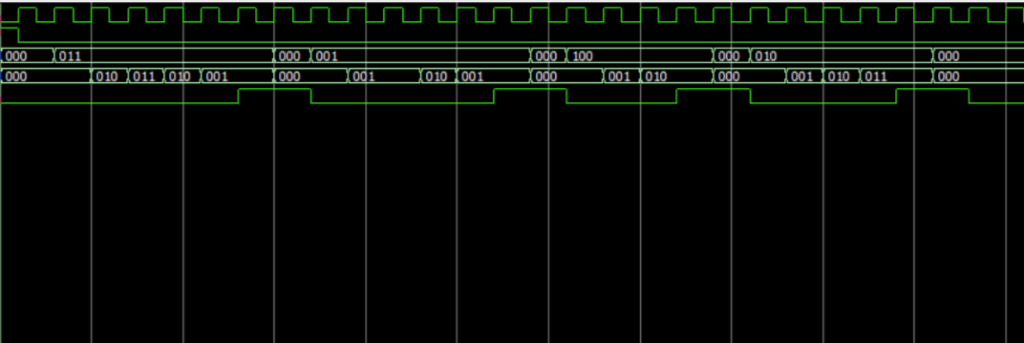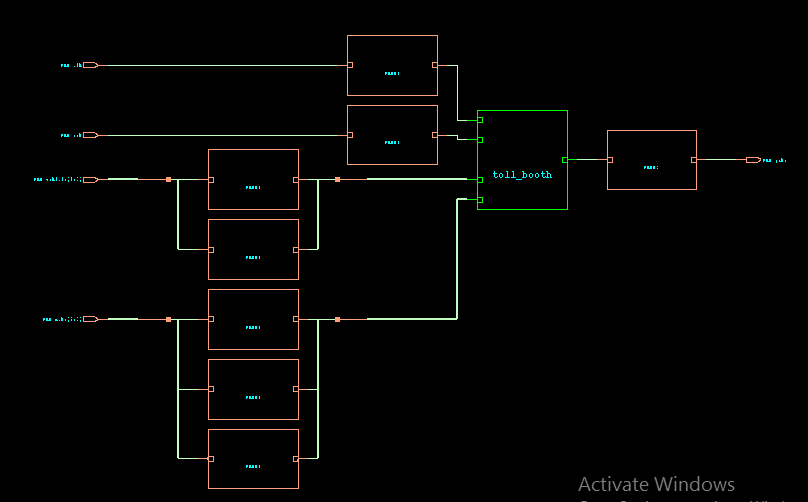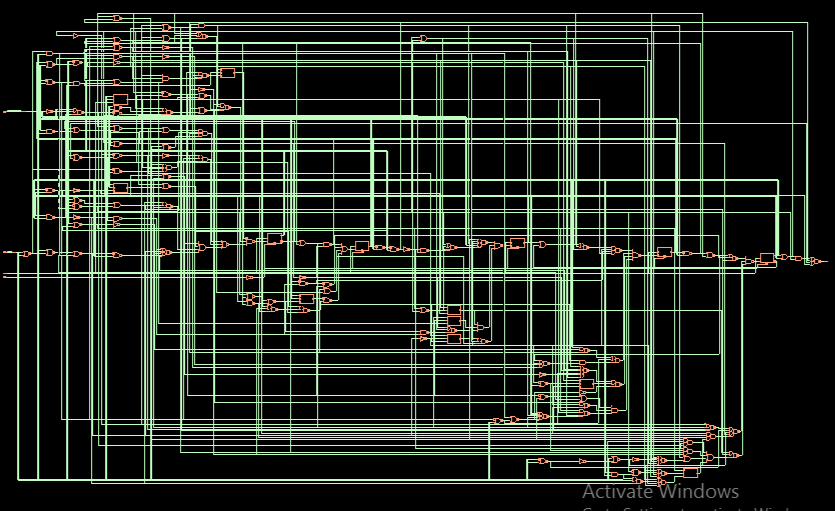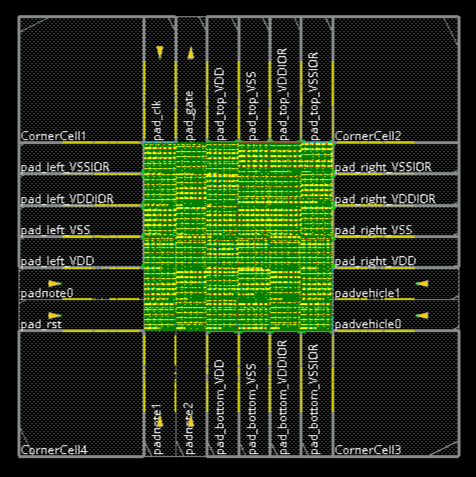Full Chip Design of Automated Toll Booth System
The primary objective of this project is to design and implement a fully automated toll booth system that efficiently manages vehicle classification and toll collection. The system aims to minimize human intervention, reduce traffic congestion, and streamline toll transactions by automatically determining the appropriate toll based on the vehicle type and payment amount. The system is built on a state machine model, with each state corresponding to different vehicle types and payment amounts. Vehicles are classified into categories such as private cars, large vehicles, buses, and bikes, with each category having specific toll requirements. The system transitions through a series of states to ensure the correct toll is collected before opening the gate to allow the vehicle to pass.
Design and Development Process:
-RTL Design and Testbench Creation:
The project began with the writing of the RTL (Register Transfer Level) code to define the logic and behavior of the toll booth system. A testbench was created to simulate and verify the RTL code, ensuring that the logic was functioning as intended.
-Block-Level Design:
After verification at the RTL level, the design was broken down into smaller blocks. Each block was individually designed and tested to ensure that it met the required specifications. This modular approach allowed for more manageable debugging and validation.
-Full Chip Design:
Once the block-level designs were verified, they were integrated into a full chip design. The project utilized advanced design tools such as Quartus Prime II for RTL and Testbench. For implementation, Cadence Genus for synthesis, and Cadence Innovus for physical design and optimization. This stage involved rigorous testing and optimization to ensure that the final chip met all performance, power, and area constraints.
Future Aspects:
The project holds significant potential for future enhancements. Upcoming developments could include the integration of RFID technology for contactless toll collection, the implementation of dynamic toll pricing based on real-time traffic conditions, and the expansion to handle additional vehicle types and tolling scenarios. Furthermore, the system could be scaled to manage multiple toll booths across a network, providing centralized monitoring and data analytics.
Merits:
– Efficiency: The automation of toll collection reduces the need for manual intervention, speeding up the transaction process and minimizing wait times.
– Accuracy: The state machine model ensures precise toll calculation, reducing the likelihood of errors.
– Scalability: The design can be adapted for various toll booth configurations and vehicle types, making it highly versatile.
– Security: Automation decreases the risk of toll evasion and enhances the overall security of the toll collection process.
Demerits:
– Initial Setup Cost: The implementation of the system requires a significant initial investment in hardware and design tools.
– Technical Failures: As with any automated system, there is a risk of technical glitches or failures that could disrupt operations.
– Adaptability: The system must be regularly updated to accommodate changes in toll rates, vehicle classifications, or technology standards.
This project highlights the transformative potential of automation in transportation infrastructure, demonstrating how modern design tools and methodologies can create efficient and scalable solutions for real-world challenges.



